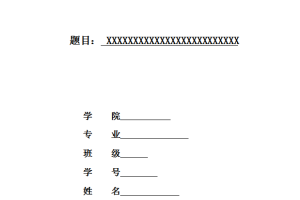摘要
众所周知,中文成语无论在构词上还是用法上均与英语习语大不相同。如何将中文成语恰如其分地翻译成英语就成了一大难题。本文旨从文化差异的角度为中文成语在英语中的翻译提供几种方法,主要可分为三部分:首先第一部分主要介绍成语的定义和特点;第二部分主要描述了成语中英翻译间存在的问题以及原因,最后第三部分则针对这些问题提供了几条实际的翻译方法。
关键词:成语,直译,意译
Abstract
As we all know,some Chinese idioms are very different from English idioms in their constitutions and the figurative usages.How to comprehend and translate those idioms is a troublesome problem for most children.This paper will help you to make a successful translation.This paper mainly falls into three parts.The first part,gives a brief introduction about the defination and the features of idioms.The second part gives a detailed introduction about how to retain those character in translation and the difficulties in the translation process. And the third part sums up several methods of translating idioms.
Key words: Chinese idioms, literal translation, liberal translation
Contents
Abstract…………………………………………………………………………………………………….. 1
Acknowledgements……………………………………………………………………………………… 3
Contents…………………………………………………………………………………………………….. 3
Chapter 1 Introduction……………………………………………………………………………….. 4
1.1 A Brief Introduction to Chinese Idiom………………………………………………….. 4
1.1.1 The Definition of the Chinese Idioms …………………………………………. 5
1.1.2 The Features of Chinese Idioms…………………………………………………. 5
1.2 The Purpose of the Paper………………………………………………………………….. 6
Chapter 2 Difficulties in English Translation of Chinese Idiom…………………………….. 6
2.1 Allusions of Chinese Idiom…………………………………………………………………. 6
2.2 No Corresponding English Idiom to Chinese Idioms……………………………… 6
Chapter 3 Causes Behind the Difference……………………………………………………… 6
3.1 Cultural Difference…………………………………………………………………………… 6
3.2 Different Cognition…………………………………………………………………………… 6
Chapter 4 The Principle of Translation and Translation Method of Chinese Idioms.. 7
4.1 Equivalence Theory…………………………………………………………………………. 7
4.2 Specific Strategies Used in Idioms Translation………………………………………. 8
4.2.1 Literal TranslationInterview with the Teacher……………………………….. 8
4.2.2 Liberal TranslationInterview with the Students……………………………… 9
4.2.3 Literal Plus Liberal Translation……………………………………………………. 9
4.2.4 Translation with Notes……………………………………………………………. 10
Chapter 5 Conclusion………………………………………………………………………………. 11
References……………………………………………………………………………………………….. 12





